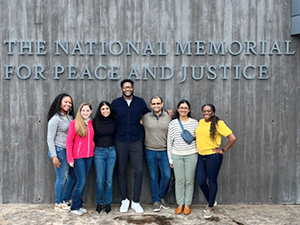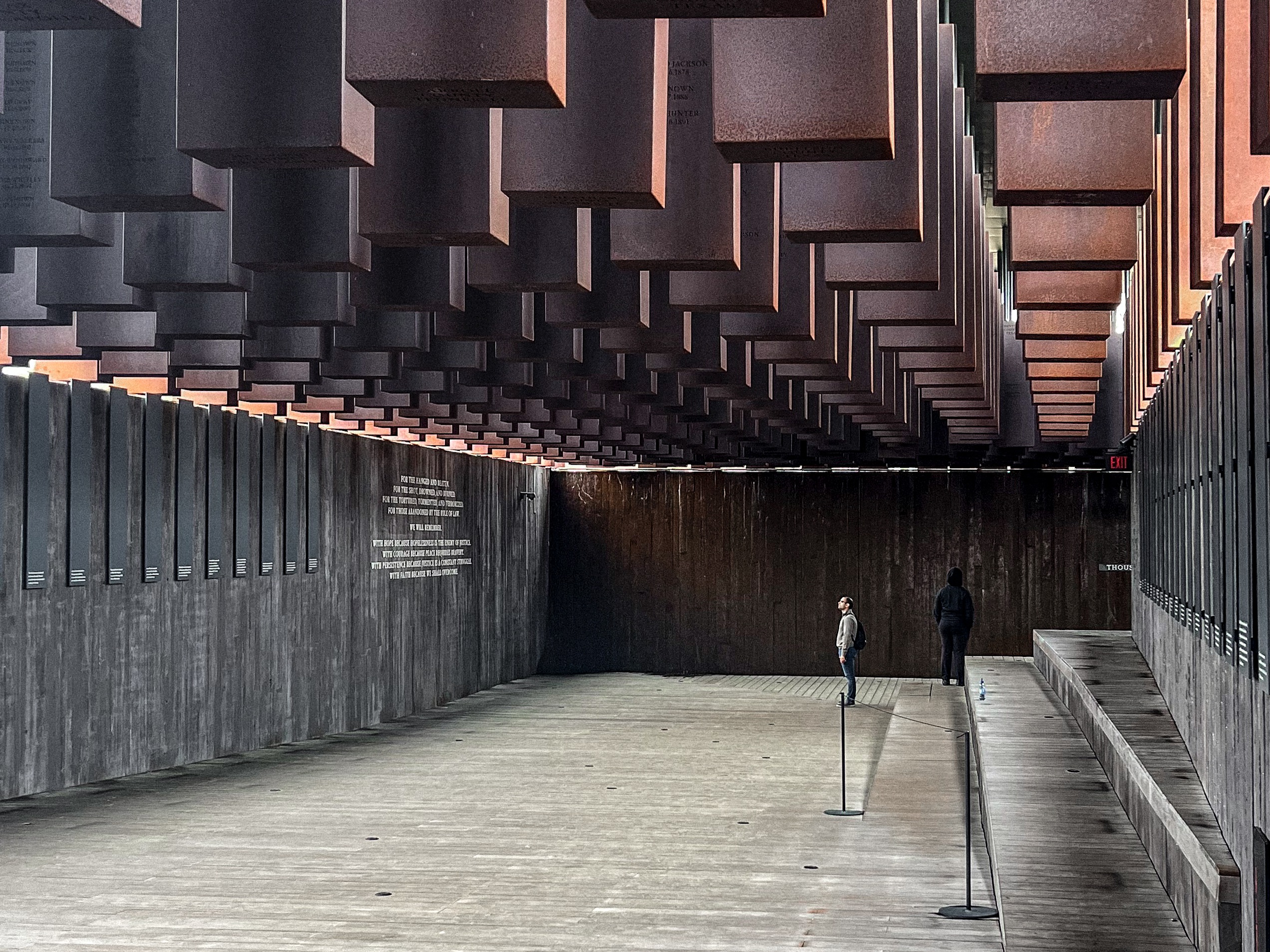
by Malcolm B. Chapman, M.D. (PGY-2)
During March and April 2024, UAB Internal Medicine Residents in the Health Disparities Track visited the Legacy Museum and the National Memorial for Peace and Justice at the Equal Justice Initiative in Montgomery, Alabama. Here is a reflection of one of those residents.
I walked silently, my gaze fixed on the rising pillars of oxidized metal. Despite being set on top of a verdant hill, this was an undeniably solemn place. As I descended the path further into the hill, row after row of the brown, rusting masses loomed overhead, bearing down on me as the concrete walls rose at my sides. Set into the surface of each pillar were dates and names of men, women, and children who were murdered by racial terror lynching.
More than 4,000 lives are commemorated at the National Memorial for Peace and Justice.

For some years, I had heard from family and friends about the Equal Justice Initiative’s Legacy Museum and the National Memorial for Peace and Justice. So, I was excited in the days before taking the short drive down to Montgomery. However, as we shuffled into the first hall of the museum and across a narrow passage to the first exhibits, I was captivated by the metaphors intertwined in its design.
Even as I write this, my mind undulates between fascination and disillusionment spawned by the incredibly treacherous history captured within the Legacy Museum. And, though I’d like to share every detail, I must refrain so as not to risk spoiling the museum for those of you who have yet to visit.
Instead, I’ll simply share three of the most poignant lessons that I gleaned personally:
-
While I was taught about the transatlantic slave trade, my primary education did very little to discern between it and the domestic slave trade. So, I had often conflated the two, not realizing that the latter was largely responsible for concentrating African slaves in the South for decades after the former was federally abolished.
-
Though exercises of racial terror in the U.S. exerted psychological effects due to a seeming randomness, they were often paralleled by broader sociopolitical agendas of the time. Through published media, often in the form of newspaper articles, the two demonstrate the flagellations of structural racism that founded the Jim Crow era.
-
We are living in historic times at this very moment. While we collect and interpret our history in these spaces through mediums such as photographs, paintings, sculptures, dance, and music, so much is preserved only in our memory.
In the spirit of Henley’s "Invictus," I would implore you to take your own journey. Visit Montgomery, grab a coffee in its downtown, walk along the river, read the plaques, take in the Legacy Museum, and explore the grounds of the National Memorial for Peace and Justice. In doing so, I found room for my own introspection and inspiration as I returned to the wards and to the patients I serve.